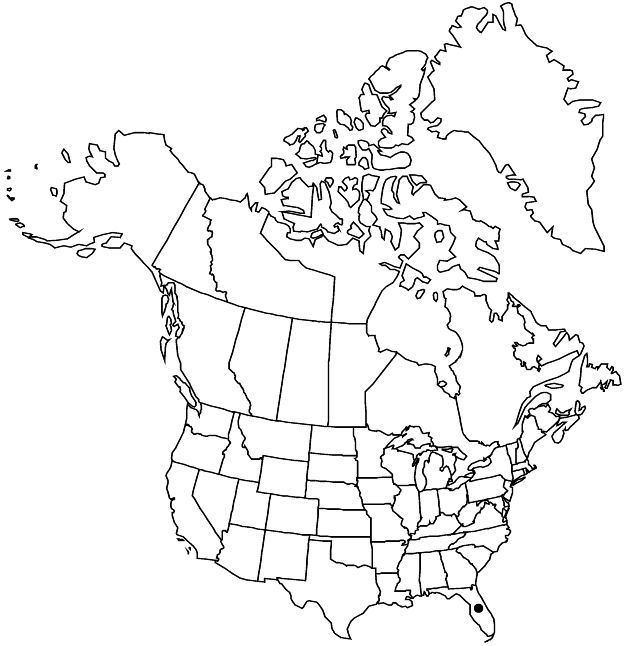Euphorbia blodgettii
Rep. (Annual) Missouri Bot. Gard. 4: 126, plate 13. 1893.
Herbs, usually annual, occasionally perennial, with slender to slightly thickened taproot, 3.5 mm diam.. Stems prostrate to decumbent, loosely mat-forming, often rooting at nodes, 10–45 cm, glabrous. Leaves opposite; stipules distinct, subulate filiform segments (lower side), or connate forming conspicuous, broad deltate scale (upper side), toothed, 0.5–1 mm, glabrous; petiole 0.7–1 mm, glabrous; blade ovate to oblongelliptic, 4–10 × 2–5 mm, base asymmetric, subcordate to rounded, margins usually entire, occasionally toothed, apex usually obtuse to rounded, occasionally acute to apiculate, surfaces without red blotch, glabrous; 3-veined from base, only midvein conspicuous. Cyathia solitary or in small, cymose clusters at distal nodes of stem or on congested, axillary branches; peduncle 0.4–0.6 mm. Involucre turbinate to campanulate, 0.5–0.6 × 0.4–0.6 mm, glabrous; glands 4, red, slightly concave, elliptic-oblong, 0.1 × 0.1–0.3 mm; appendages white to pink, unequal, pair near sinus lunate to oblong, 0.1–0.2 × 0.1–0.3 mm, distal margin entire, crenulate, or irregularly sinuate, other pair sometimes rudimentary, 0–0.1 × 0.1–0.3 mm, distal margin crenulate or entire. Staminate flowers 8–12. Pistillate flowers: ovary glabrous; styles 0.3–0.4 mm, 2-fid 1/2 length. Capsules broadly ovoid, 1.2–1.7 × 1.4–1.9 mm, glabrous; columella 1.2–1.6 mm. Seeds gray to reddish-brown, oblong-ovoid, 4-angled in cross-section, 0.9–1.1 × 0.5–0.6 mm, flat or obscurely wrinkled.
Phenology: Flowering and fruiting year-round.
Habitat: Coastal sand dunes and disturbed upland sandy areas.
Elevation: 0–20 m.
Discussion
Euphorbia blodgettii is found only in peninsular Florida. It is closely related to E. garberi, E. porteriana, and E. serpens (Y. Yang and P. E. Berry 2011).
Selected References
None.
Lower Taxa
"broad" is not a number."connate" is not a number. "distinct" is not a number."/2" is not declared as a valid unit of measurement for this property.
